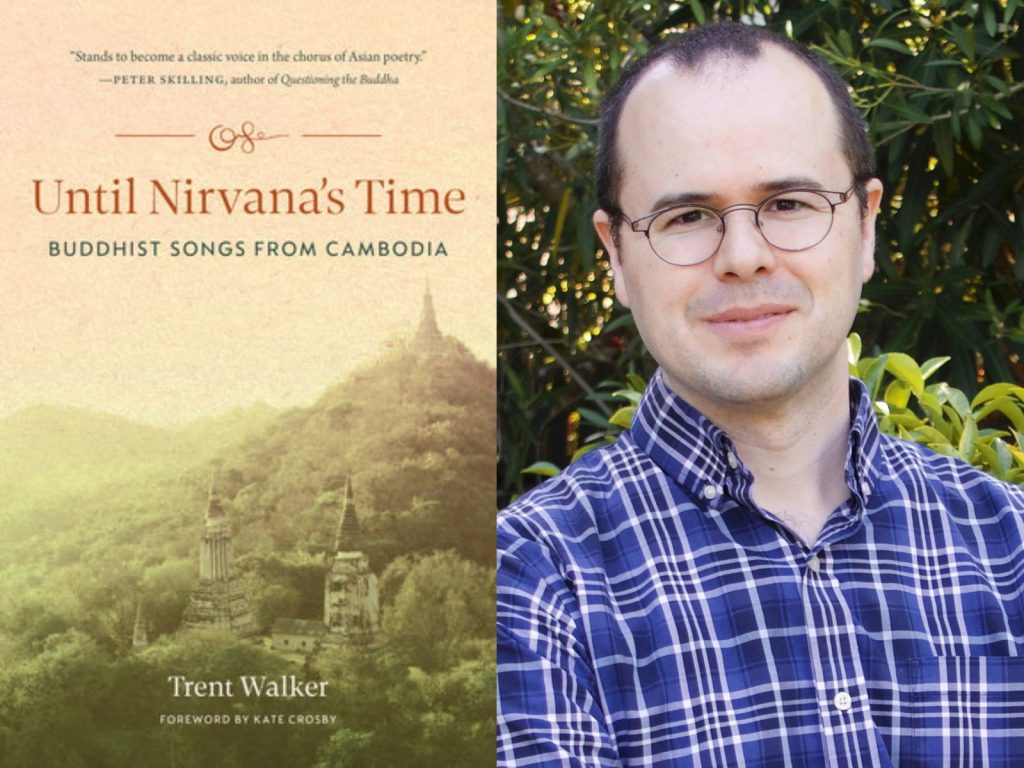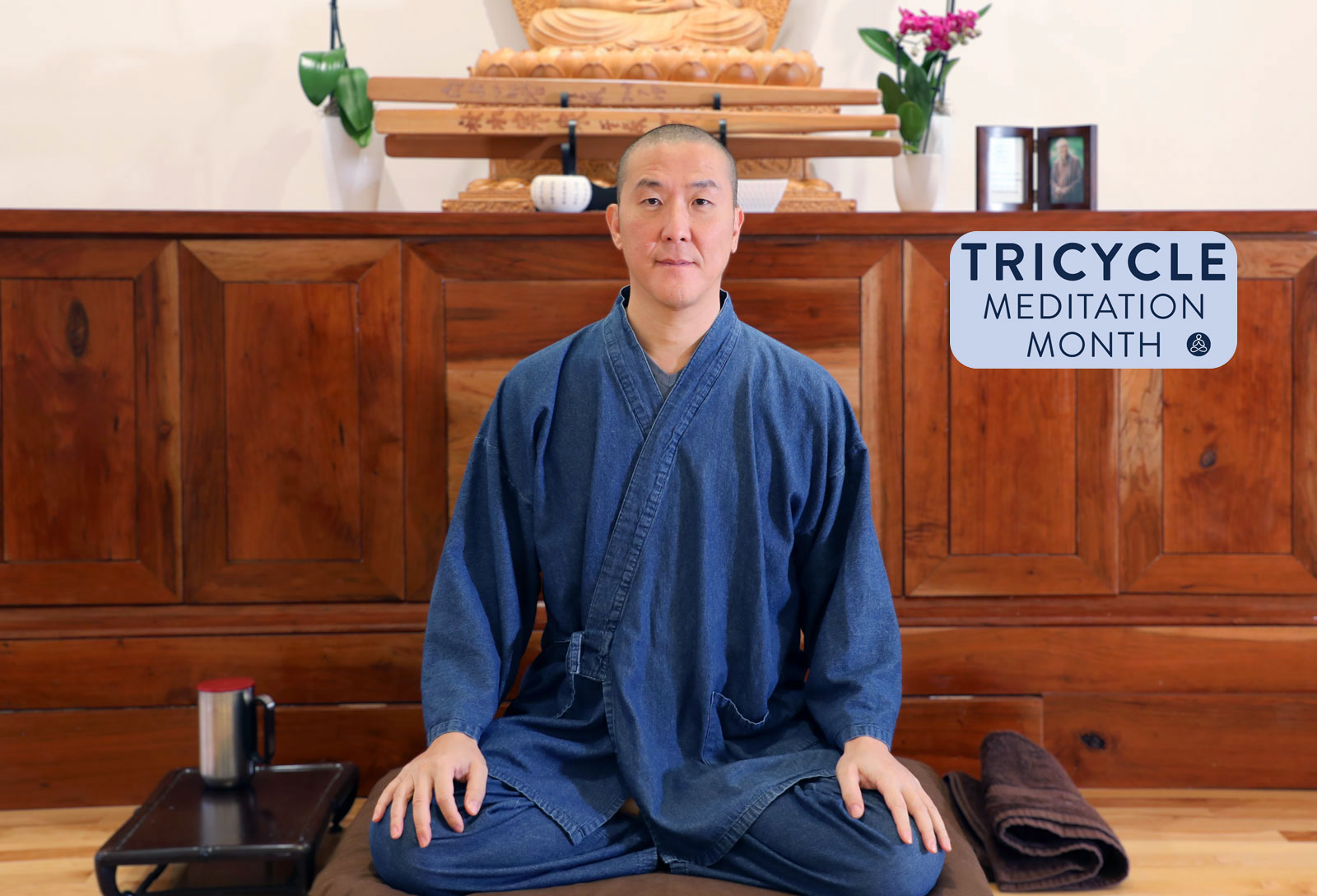The Neglected Music of the Theravada Tradition
In an episode of Tricycle Talks, scholar Trent Walker explores how the Cambodian dharma song tradition demonstrates “a mischievous streak in Buddhist monasticism,” sitting at the intersection of asceticism and sensuality. The post The Neglected Music of the Theravada...

In an episode of Tricycle Talks, scholar Trent Walker explores how the Cambodian dharma song tradition demonstrates “a mischievous streak in Buddhist monasticism,” sitting at the intersection of asceticism and sensuality.
By Trent Walker Dec 27, 2022 Trent Walker’s new book, Until Nirvana’s Time: Buddhist Songs from Cambodia, is out now with Shambhala Publications.
Trent Walker’s new book, Until Nirvana’s Time: Buddhist Songs from Cambodia, is out now with Shambhala Publications.The Theravada tradition of Buddhism is typically associated with monastic purity and austerity. But according to Trent Walker, a scholar of Southeast Asian Buddhist music and author of the new book Until Nirvana’s Time: Buddhist Songs from Cambodia, this is only half true because it ignores the rich and vast traditions of Theravada liturgical music. In “Dharma Songs to Stir and Settle,” his article in the spring 2022 issue of Tricycle, Walker offers an introduction to the Cambodian dharma song tradition, with a particular emphasis on the affective states that dharma songs elicit. For Walker, dharma songs strike a balance between aesthetic expression and monastic austerity.
On Tricycle’s podcast, Tricycle editor-in-chief James Shaheen spoke with Walker about classical South Asian theories of emotion, his hopes for the future of Buddhist studies, and how music and aesthetics fit into the Buddhist path to salvation. Read an excerpt from their conversation below, and listen to the full episode (including Walker’s performance of two dharma songs) here.
***
You write that dharma songs illustrate “a mischievous streak in Buddhist monasticism, a verve for aesthetic freedom within the austere regulations of the order.” How do Buddhist monastics navigate this tension between aesthetics and austerity? In the Theravada tradition, Buddhist monasteries have multiple responsibilities: they are tending after and caring for the dharma and allowing the place for Buddhist teachings and practices to flourish, and they’re also taking care of and creating a space for traditional culture that may not be expressly Buddhist, including visual arts, dance, theater, and music. This is very much true in Cambodia, both today and in the past. For instance, in Cambodia, before the onset of secular education for all children, the monastery was one of the few places where people outside of elite circles could get an education in Buddhism but also in secular subjects. Monasteries have long been hubs for cultural knowledge, and within that twin role that monasteries have held, there has always been a tension between the vinaya (the monastic regulations that monks are expected to follow and the precepts that lay people are also expected to follow) and the importance of beauty and finding a place for the aesthetic, a place for creating lovely works of art and beautiful pieces of music.
Dharma songs are one way of expressing this binary. On the one hand, this form of melodic chant is understood to be permissible for monastics to engage in. In other words, it’s not considered singing in the secular sense, and only very rarely would it have musical accompaniment. On the other hand, the melodies and musical modes and scales that are used have a close relationship with traditional Cambodian music, particularly the music used for weddings and funerals. As a result, the dharma song tradition sits at this intersection. It’s one example of the middle way that many Buddhist practitioners of art forms try to take, navigating between the extreme of sensuality and indulging in art or music only for the sake of aesthetic pleasure and the extreme of asceticism and cutting away all that might be beautiful and inspiring, all that might draw people into the dharma through our sense faculties, through our capacities to be inspired and moved by art and music.
Though they’ve been largely ignored by scholars, dharma songs play a very important role in life in Cambodia and in the Theravada world more generally, particularly in funerals, healing rituals, and celebratory festivals. What is it about these dharma songs that lends them so well to these moments of mourning and celebration? To me, there are two key archetypal rituals that dharma songs are associated with in Cambodian culture. One is deathbed rites, and the other is the consecration of Buddha images. In a way, both of these are moments of profound transformation: the transformation as we as human beings face the end of our lives and transition into death, into a new rebirth, and the way in which an icon of stone or metal or wood is transformed into an embodiment of the awakened qualities of the Buddha. Those two moments of transformation are where dharma songs are most closely associated.
Partly because these are moments of profound transformations, the chants, liturgical patterns, and ways in which those rituals are conducted are special. They are set apart in some way, and they invite a slowing down of time and attention. In comparison to other techniques and approaches to chanting in Cambodia, dharma songs are the slowest and most complex. They require the biggest breaths and longest sustained notes. For a listener, they require the most focus, attention, and engagement just to be able to understand the words that are being recited. As such, they’re appropriate for these times of already heightened awareness and attention on everyone’s part—on the one hand, attending to someone on their deathbed and creating a space of peace and renunciation, being stirred by the basic facts of life that this body is impermanent, that suffering is inevitable, that whatever we hold on to as our self is not really a permanent self; on the other hand, for the moment of consecrating a Buddha image, gathering everyone’s aspirations, intention, and devotion to the qualities of the dharma and to the qualities of the Buddha that make devotion to the three jewels possible.
As a scholar of Buddhism, do you have any hopes for the future of the study of Buddhist aesthetics and performance? I think one key aspect lies in teaching. As someone who teaches in a university setting, I’m always thinking about how I can give students a chance to engage in a deep and meaningful way—not necessarily in a religious or confessional way, but in a deep and meaningful way with the traditions that we might be learning about in class. For me, when teaching about Buddhism in Southeast Asia, music is a really key element of that. For students who spend a lot of time engaging with Buddhism as expressed in words, in texts, and in textbooks, it’s a real relief sometimes to be able to not engage with the eyes at all and just focus on listening and to use that as a vehicle for intellectual exploration of this tradition—to find new ways of listening that can support the other kinds of inquiry we do in the classroom. Since I see what happens in the classroom as integral to what happens in research in the field of Buddhist studies, for me, beginning there is essential. I think the other dimension is reminding everyone who studies Buddhism in an academic way that even if they don’t have training in music theory or in a particular discipline of music, they too can learn the kinds of simple but powerful techniques for analyzing what they hear, for writing down the responses to what they hear, and for describing the sounds and the silences of Buddhist rituals and liturgical performance. I hope that that can be a larger part of how we describe what happens in particular Buddhist spaces and societies, as well as the very audible lives of texts we study.
![]()
Thank you for subscribing to Tricycle! As a nonprofit, we depend on readers like you to keep Buddhist teachings and practices widely available.
This article is only for Subscribers!
Subscribe now to read this article and get immediate access to everything else.
Already a subscriber? Log in.

 MikeTyes
MikeTyes 
























![The Most Followed Gen Z Celebrities on Instagram [Infographic]](https://imgproxy.divecdn.com/JKpBFjSX_y0W1otFFRdybO8P8atJALo0ncJMhOZjaiA/g:ce/rs:fit:770:435/Z3M6Ly9kaXZlc2l0ZS1zdG9yYWdlL2RpdmVpbWFnZS9tb3N0X2ZvbGxvd2VkX2dlbl96X2NlbGVicml0aWVzMi5wbmc=.webp)







